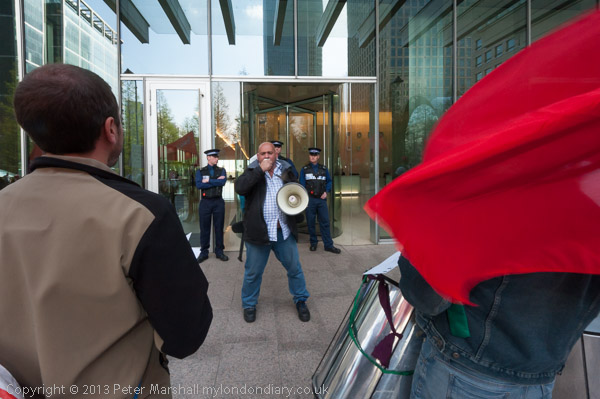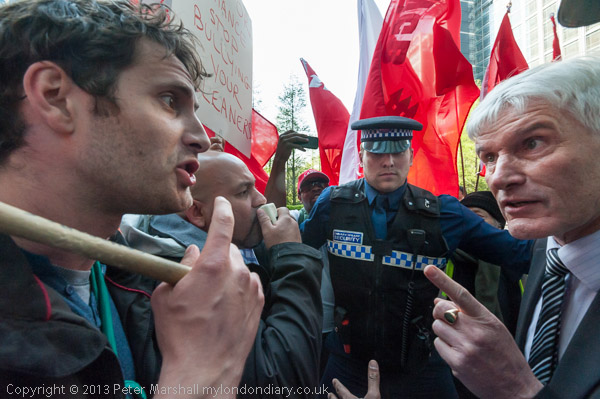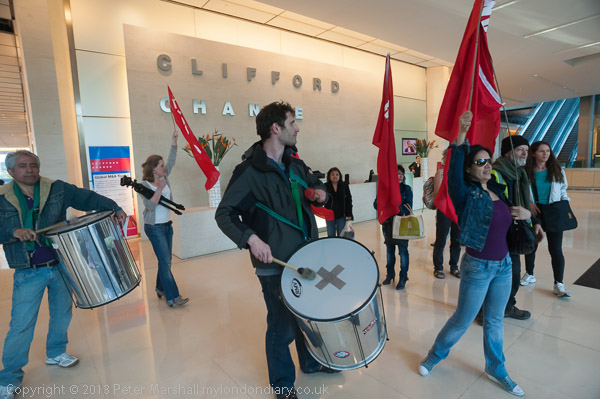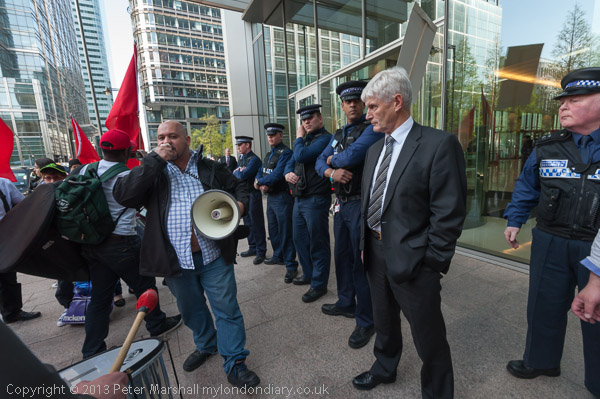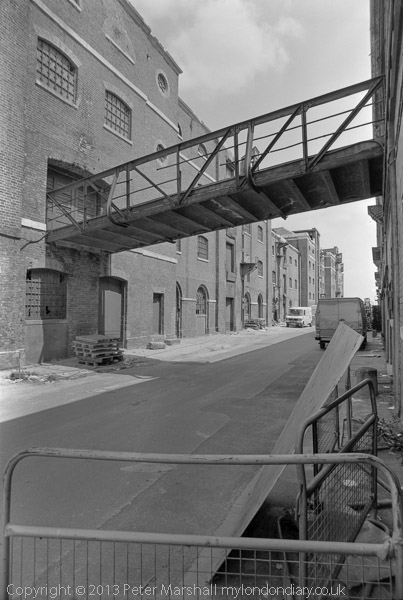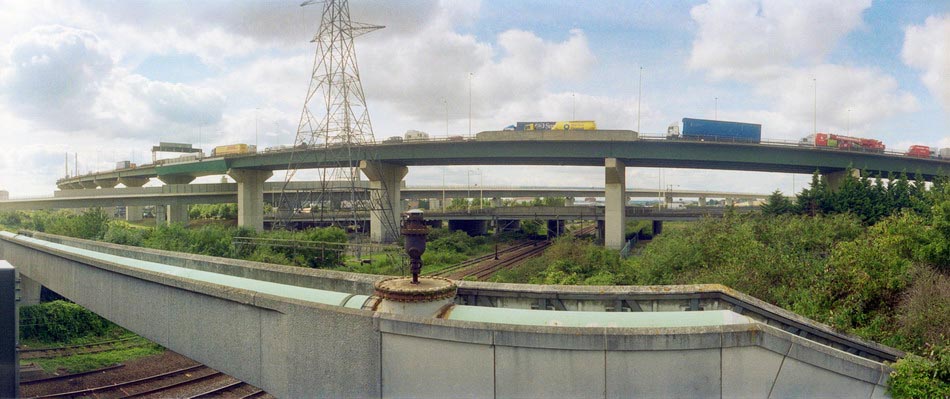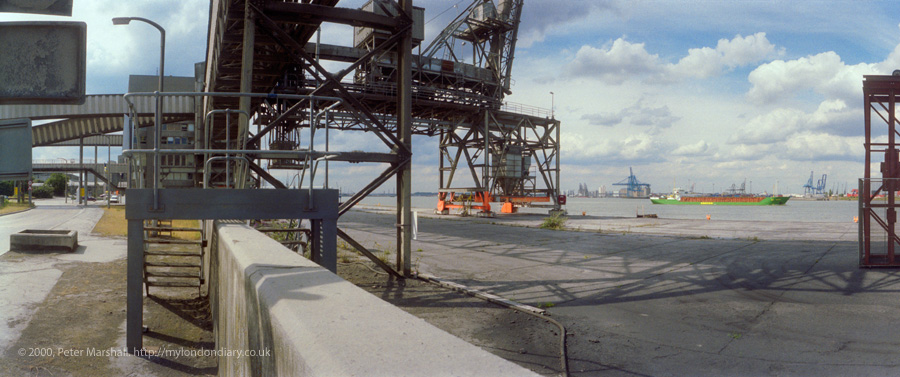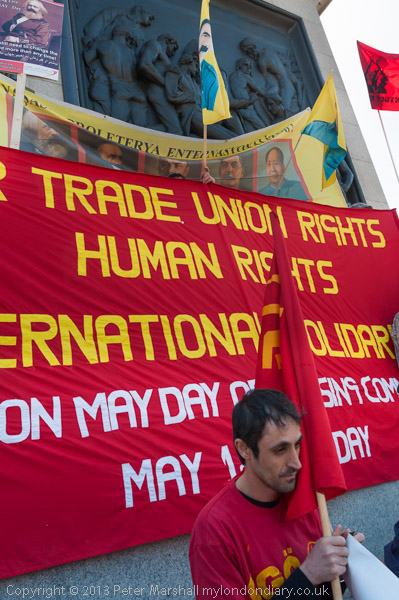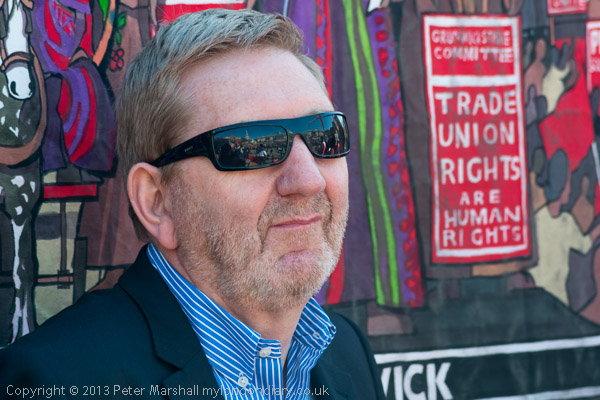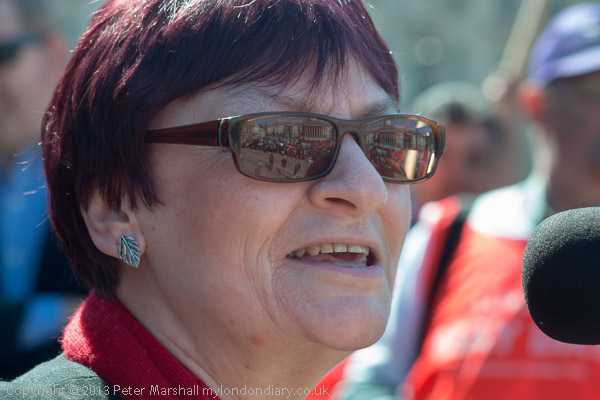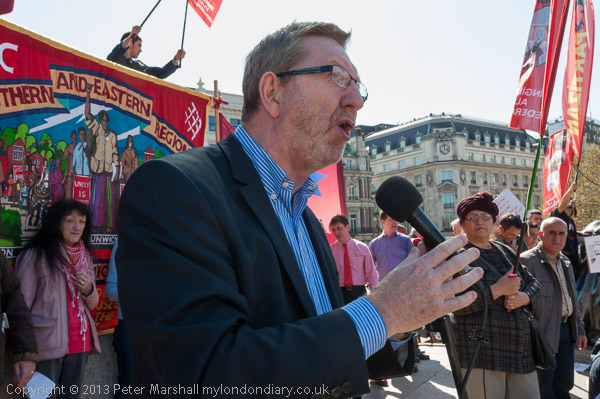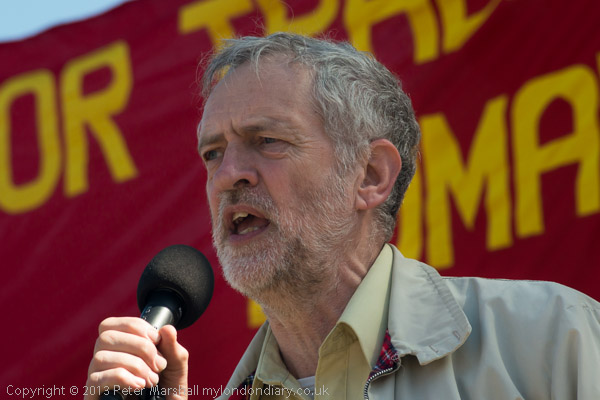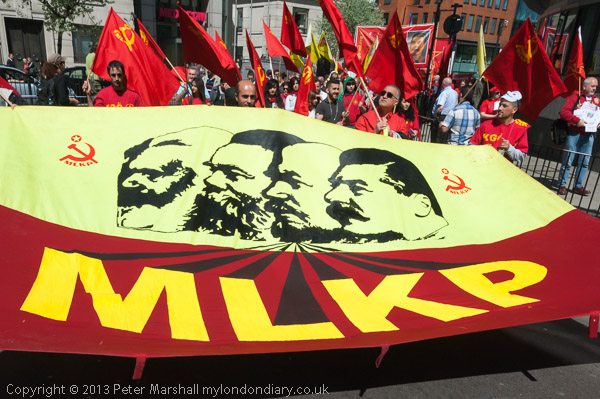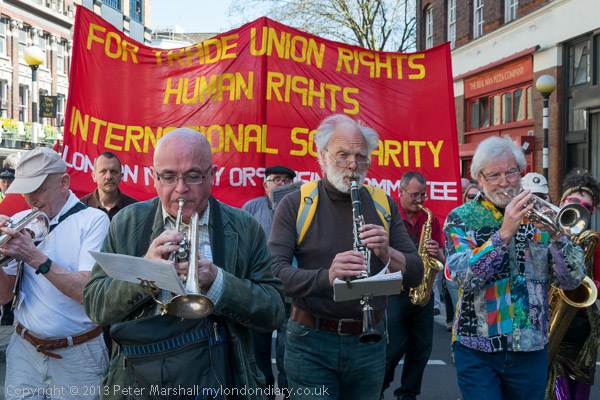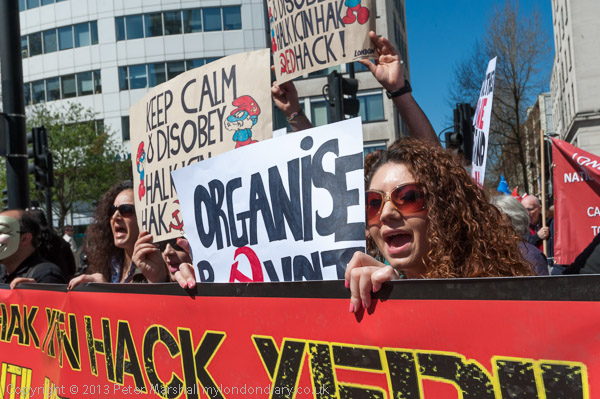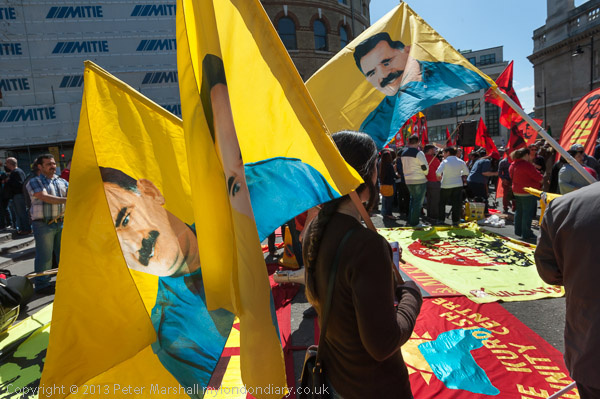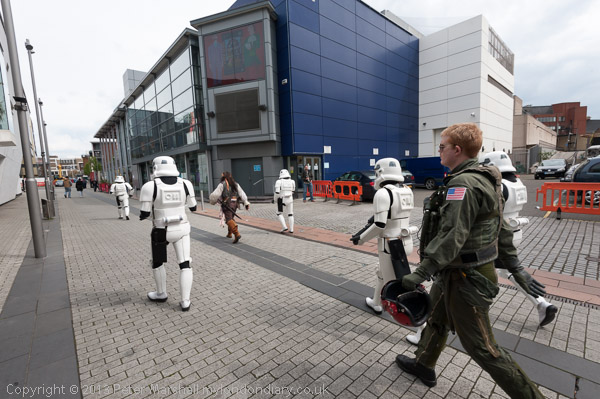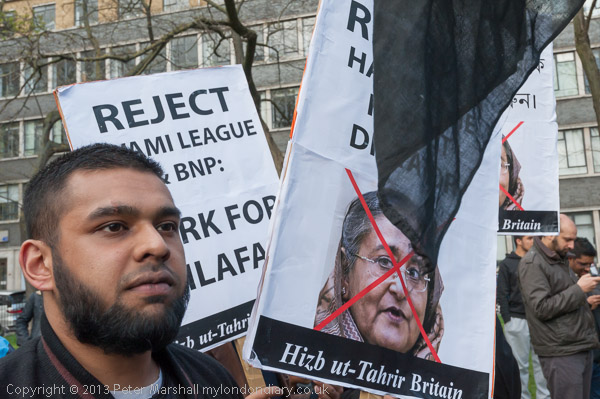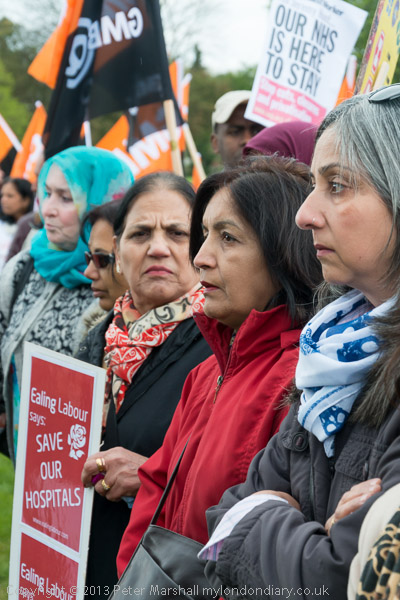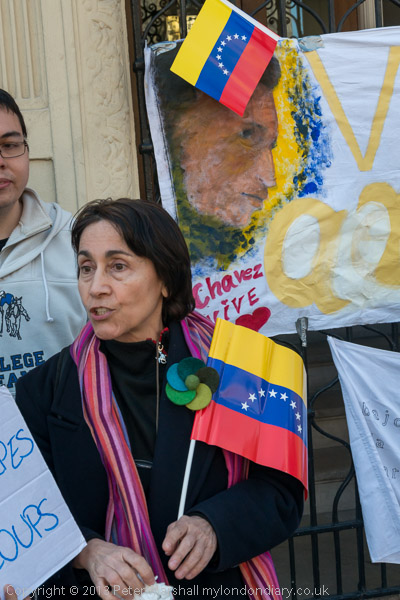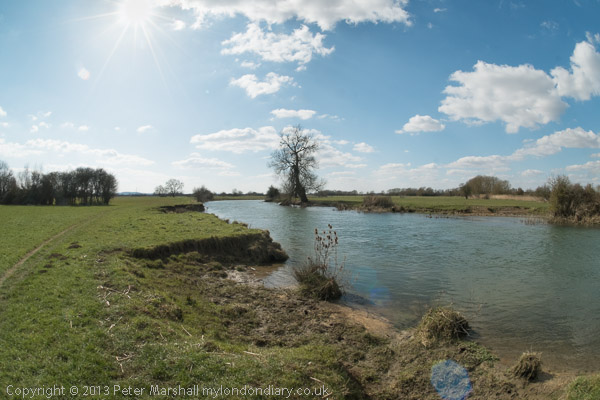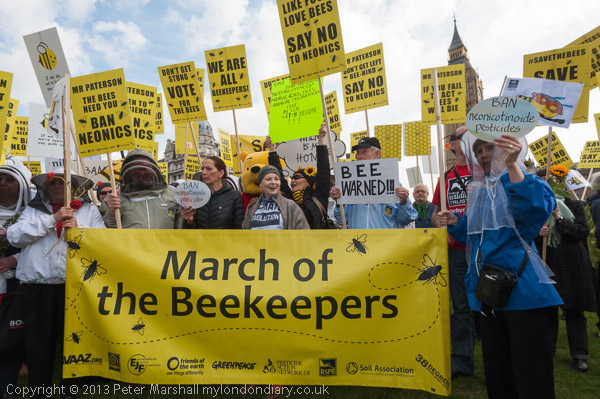
The trouble with bees is that they are dying, which is a disaster for us all, but also on a more trivial level that they seem unavoidably to lead to bad puns. On the morning of Friday 26th April I sat at my computer and began to type in a status update, ‘To Bee or not to Bee...’ but I think (and hope) that I came to a decision, jumped up, grabbed my camera bag and headed to the station on my way to Westminster before I pressed the enter key.
Part of the reason why I’d been in two minds whether to go had been the huge publicity about the issue, with mentions in the daily papers and that morning on Today programme and Radio 4 news; I didn’t know if it was going to be a very big protest, but I was sure the media would be swarming over it.
My indecision meant I missed my first train (not really the first, but the first without taking out a mortgage for the ticket) as well as the next slow service, and got to Parliament Square half an hour later than if I’d not prevaricated, and had missed the first 15 or so minutes of the photo-call. I’d been right about the media scrum, with almost as many photographers and videographers as people taking part in the protest.
As usual, the picture that almost everyone was trying to take – in a line 3 or 4 deep – wasn’t of great interest – a big crowd behind the main ‘March of the Beekeepers‘ banner and behind that Big Ben, but I took a couple of frames just because it was there when I arrived, before moving away and into the crowd to find something more of interest. I tried to make use of the many placards close together, with glimpses of that clock tower between the placards, and concentrated on single people or small groups in the foreground, particularly those who had gone to some trouble with flowers or bee-keeping clothing.
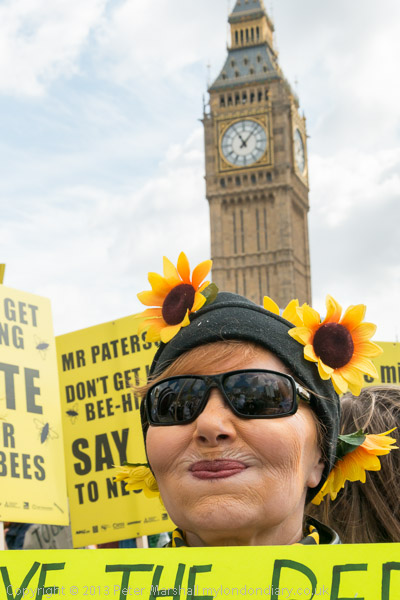
Just how much Big Ben do you need in a picture?
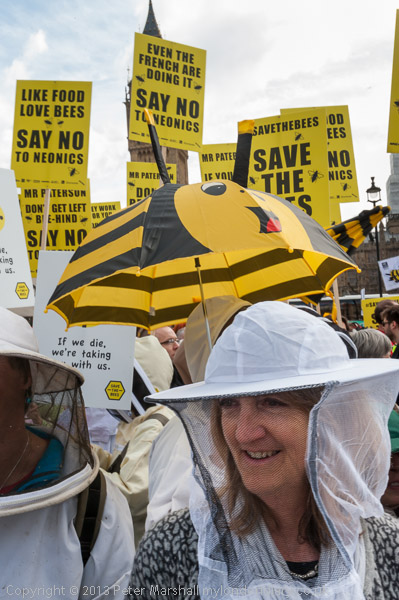
Perhaps this much?
After a while I got fed up with the big clock, and tried playing with hiding it or almost hiding it, and then tried to forget it and concentrate on the people and their costumes and props. There was a group in full bee suits, but somehow I couldn’t quite get to grips with them – the costumes were just too overpowering.
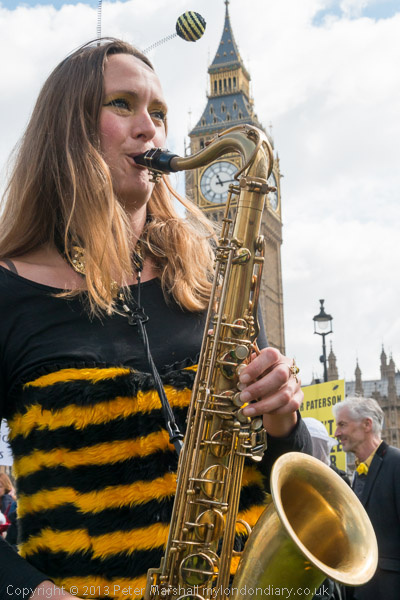
I made one picture playing with Big Ben that I did rather like, where I was able to use several circular shapes in the image of a woman in a bee costume playing a tenor sax. It wasn’t entirely straightforward because she was swaying around as she played, but I was able to frame the clock in the bend at the neck of the instrument, with one of the two balls on springs on the top of her head in the sky just to the left of the spire and the bell of the sax (elliptical rather than circular) at the bottom right of the image. Looking at if afterwards I wasn’t sure if I should have framed it a little wider to get the ball on the second of her antennae in the image as well, rather than choosing to cut off the image at the top of the bell tower (which also has a tiny ball.)
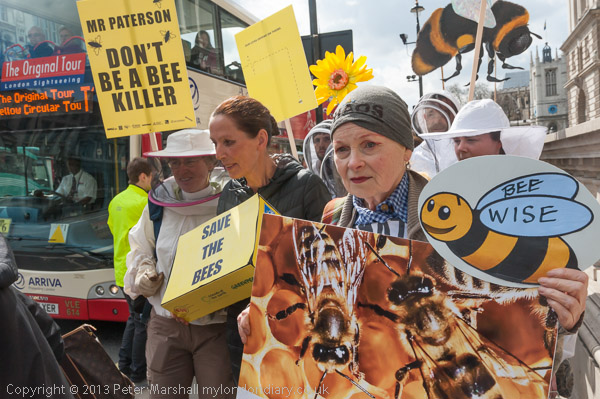
By now I’d realised that there were several celebrities present, though I hadn’t recognised them including fashion designers Dame Vivienne Westwood and Katharine Hamnett. But Katharine Hamnett was carrying the box containing the petition, a yellow box labelled ‘SAVE THE BEES’ and they were on their way to Downing St to hand it in.
Now we were in a position for one of those familiar arguments between those photographers who want to get in close and those who keep saying “lets go back, guys, so we can get a long shot.” This got a little more acrimonious than usual when one very young lady, I think still a student, called a highly respected press photographer easily old enough to be her father, a “dirty pap“. Anyway while the argument was continuing – and I couldn’t move back because my way was blocked by the photographers behind, I got in close to get the image I wanted, with a great feeling of movement and a four nicely placed bees, as well as the petition and the two designers with people in bee veils behind them. When I could manage to move back so that anyone who wanted a long shot had a clearer view – a TV crew jumped in the gap holding up the whole protest as well as greatly annoying the photographers. It wasn’t so much the camera but the large and hairy microphone on a boom that was really a pain for all the rest of us, and the interview completely stopped what was happening until the organisers broke in and said that they had to get on to meet their pre-arranged time at Downing St.
I didn’t bother to go inside through the security check at Downing St – things in there are seldom of great interest, although editors seem to like the boring pictures – and made my way back to Parliament Square for some more pictures of the bulk of the protesters who had stayed there while the small group went to deliver the petition.
The crowd there was getting quite animated, chanting various slogan, and there were a number of people taking videos and photographs. When one of the videographers walked in front of me, I decided it was time I moved in closer too, and did so, only to have another of them come and actually pull at on my jacket and tell me I had got in ‘his shot’. I ignored him as best I could while I finished photographing the person in front of me and then moved back.
These things often happen when a lot of people are working together, but it’s something you really just have to live with, and while most of us respond sympathetically to a polite request, grabbing people just is not acceptable. I hadn’t got in the scene he was taking on purpose – and was just as much a part of the event as whatever he was filming. This was an real event not something set up in a studio for his convenience.
More pictures at March of the Beekeepers.
________________________________________________________
My London Diary : Buildings of London : River Lea/Lee Valley : London’s Industrial Heritage
All photographs on this and my other sites, unless otherwise stated are by Peter Marshall and are available for reproduction or can be bought as prints.
To order prints or reproduce images
________________________________________________________
